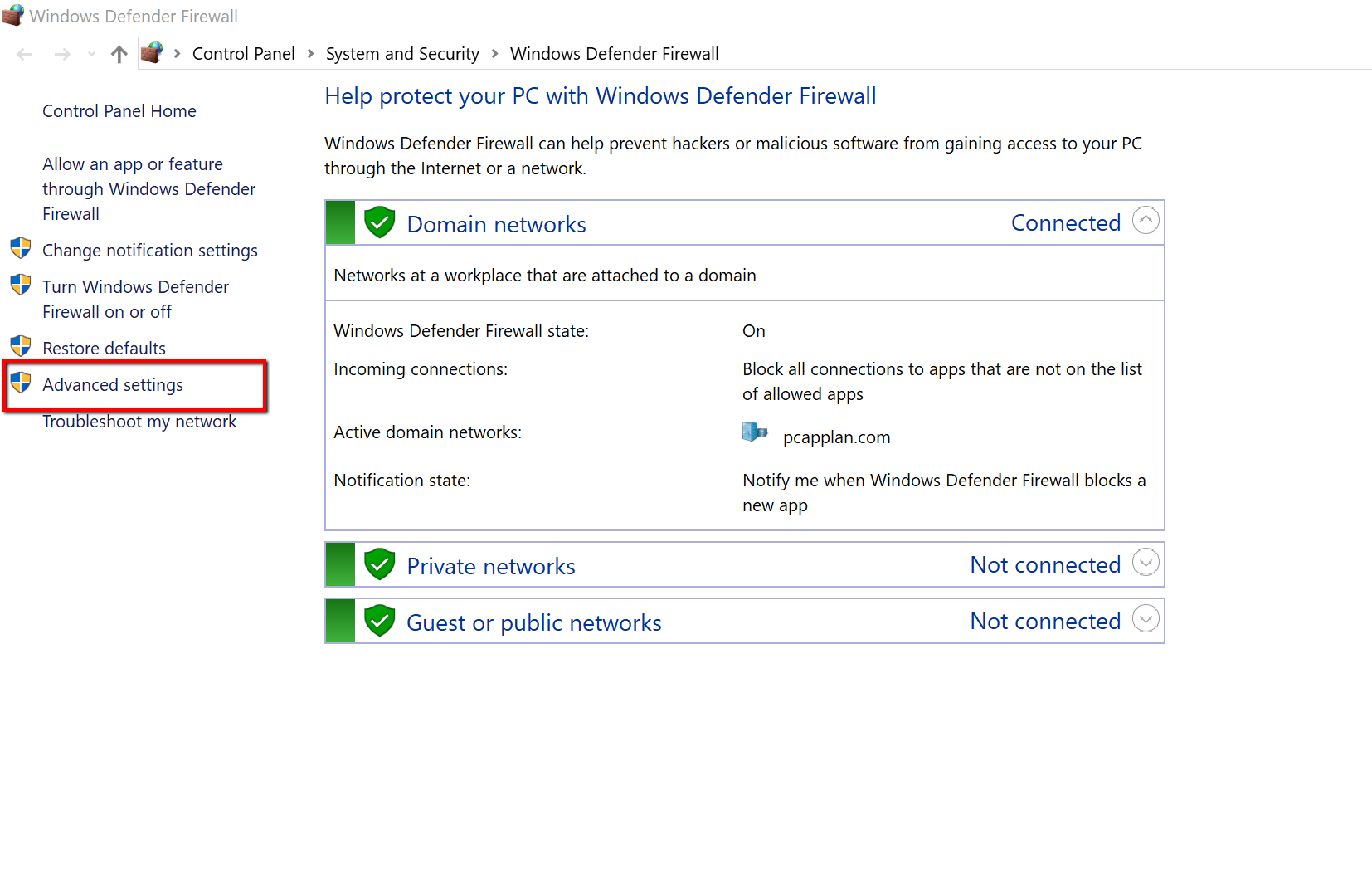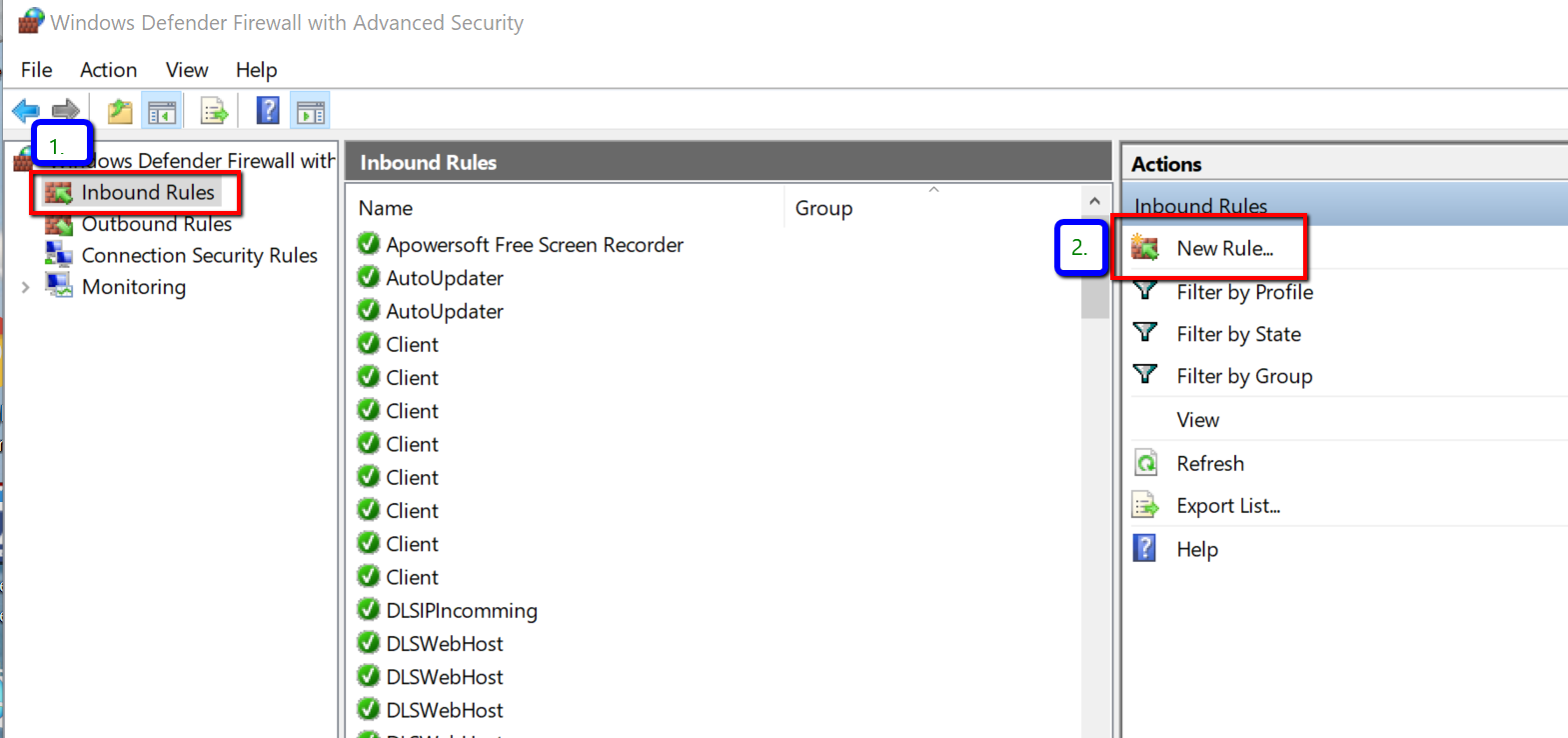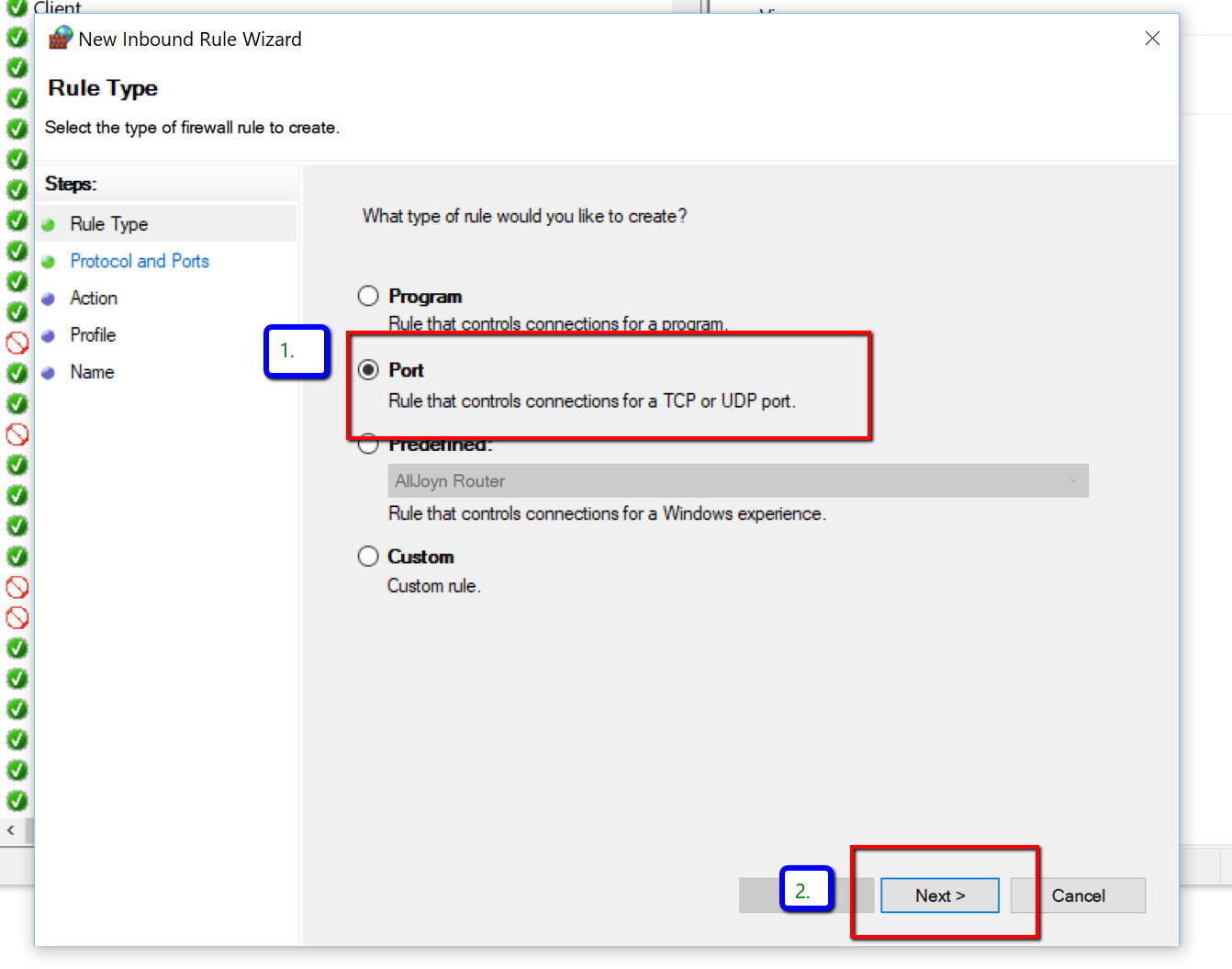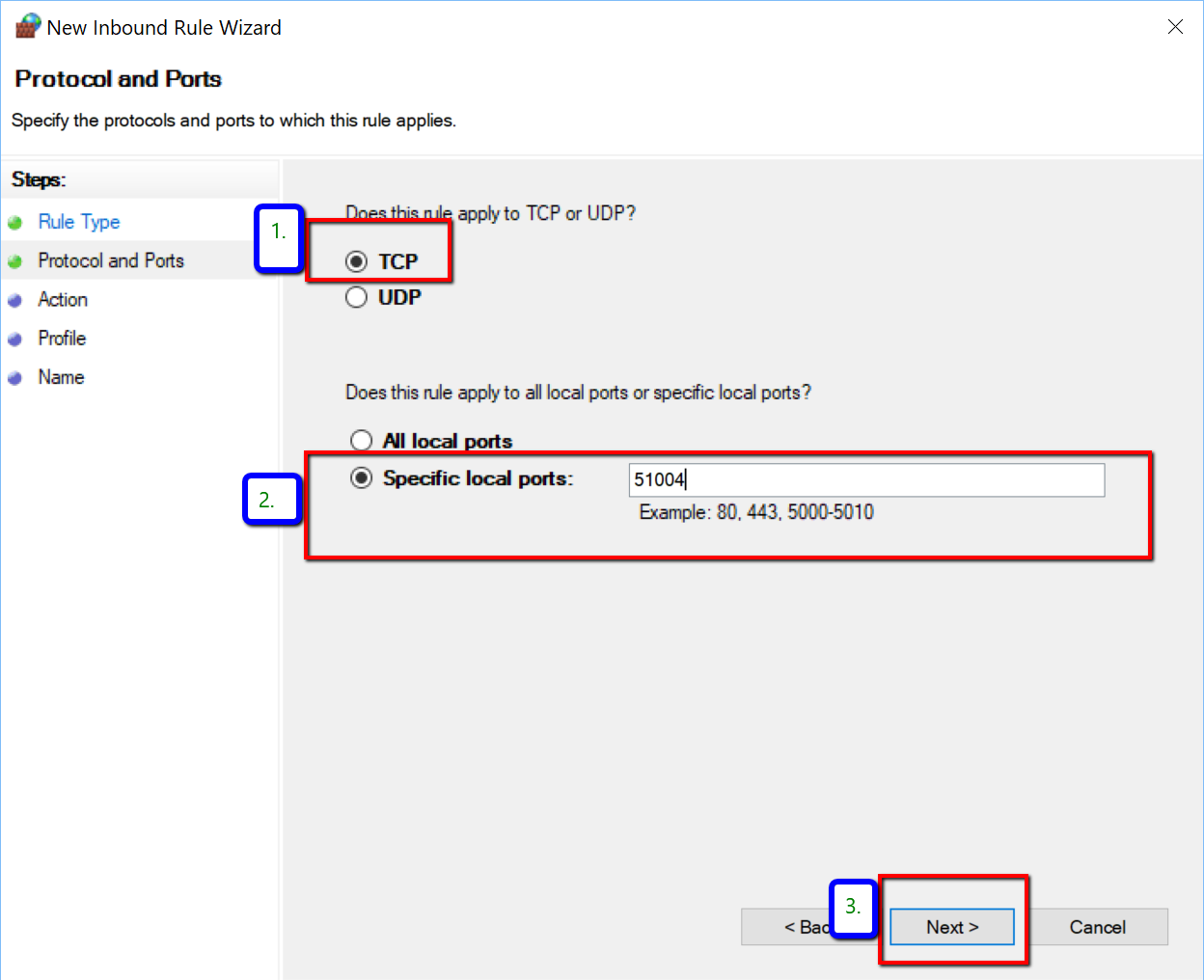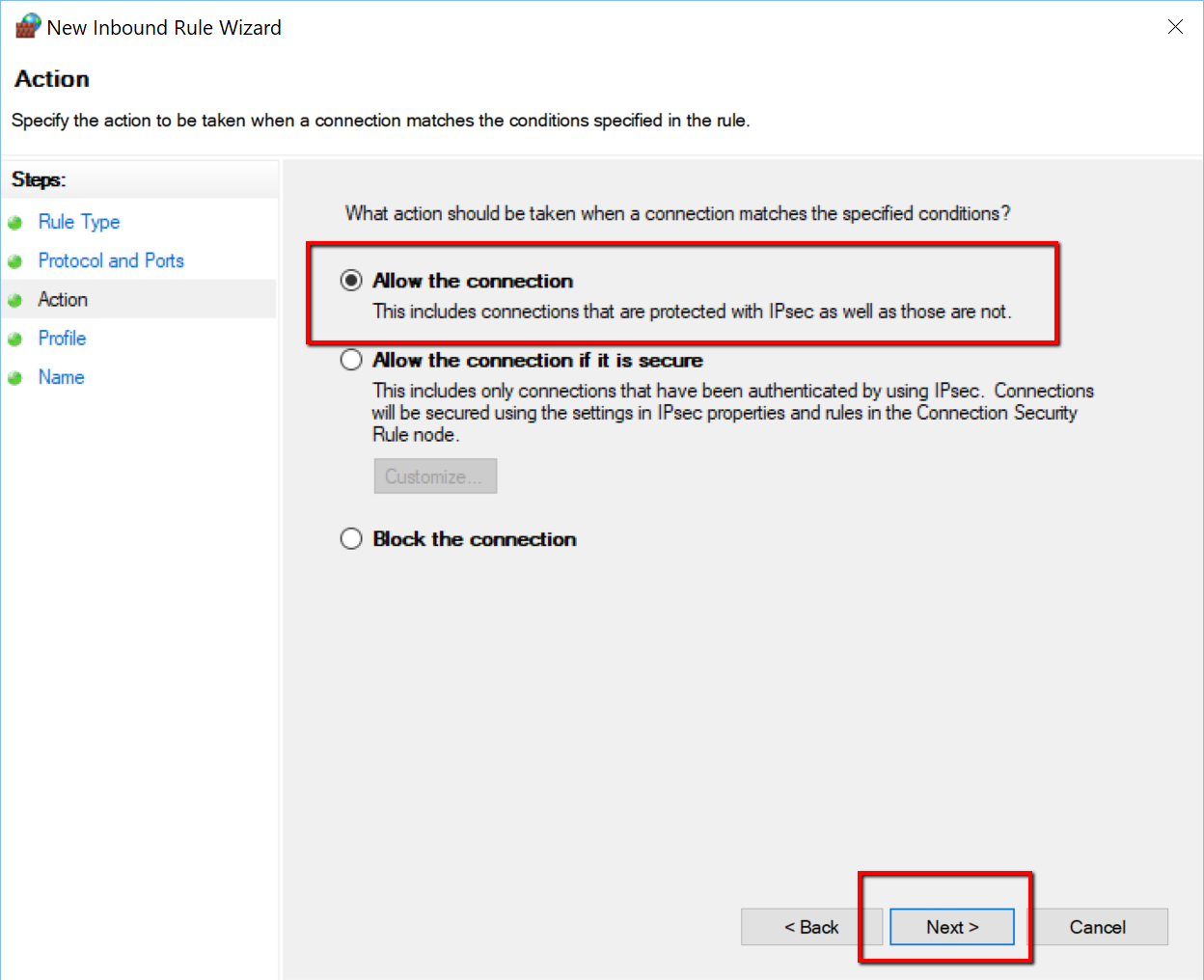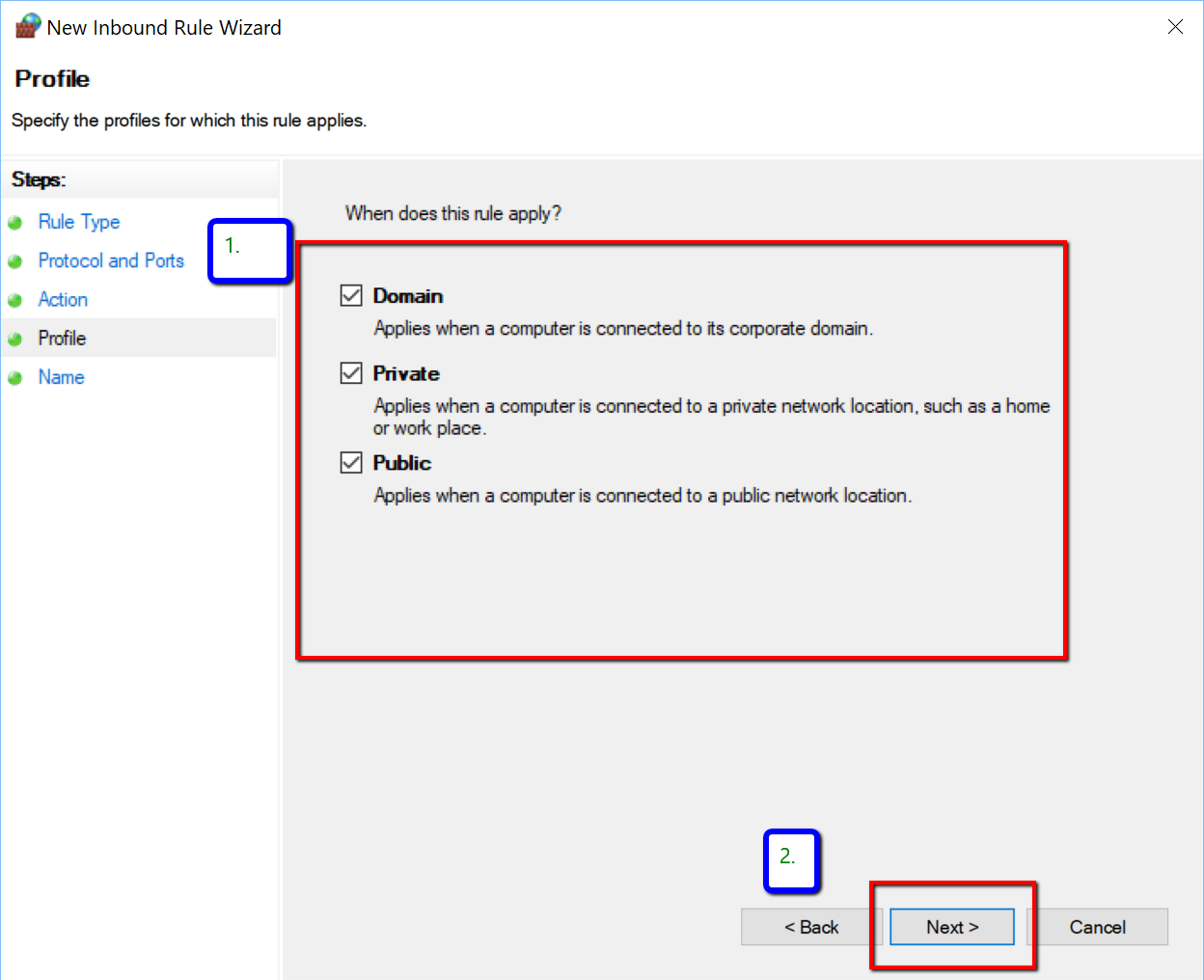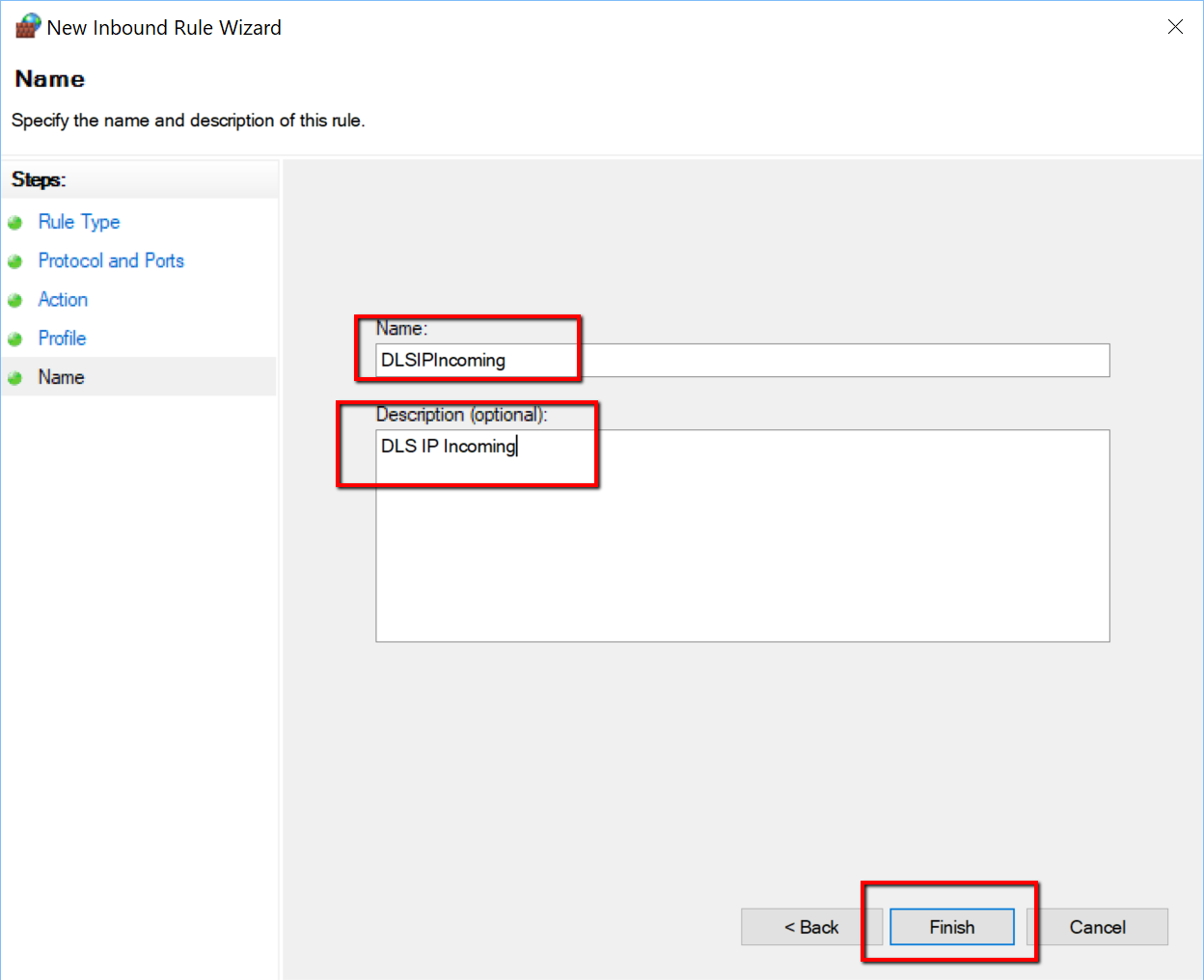|
|
| (13 intermediate revisions by the same user not shown) |
| Line 4: |
Line 4: |
| ===Firewall Friendly Connection Type=== | | ===Firewall Friendly Connection Type=== |
|
| |
|
| Firewall Friendly is a new connection type that works with PowerSeries Pro control panels. This connection type was designed to allow you to easily connect over IP to panels in the field, without the need to forward ports or make other changes to the firewall setup at the site where the panel is installed. This is especially beneficial for panels installed at sites that do not have a static IP from their Internet Service Provider, since our Firewall Friendly server will act as a DNS lookup server for the site. | | Firewall Friendly is a new connection type that works with PowerSeries Pro control panels. This connection type was designed to allow you to easily connect over IP to panels in the field, without the need to forward ports or make other changes to the firewall setup at the site where the panel is installed. This is especially beneficial for panels installed at sites that do not have a static IP from their Internet Service Provider, since our Firewall Friendly server will act as a DNS lookup server for the site. |
|
| |
|
|
| |
|
| === Firewall Friendly Setup Instructions ===
| |
| The Firewall Friendly programming can be done for any of the four Integration Sessions of the communicator. For Session 1, follow the section numbers below. For Session 2-4, please consult the PowerSeries Pro Installation Manual for the appropriate section numbers.
| |
|
| |
| ==Panel Programming:==
| |
|
| |
| Enter Section [851] and then enter sub-sections below:
| |
| 1. [424] [11111111*]
| |
| 2. [425] [enable toggle options 3 and 5]
| |
| 3. [426] [enable toggle options 3 and 5]
| |
| 4. [427] [00010]
| |
| 5. [428] [18.195.144.225]
| |
| 6. [429] [01303]
| |
| 7. [430] [03073]
| |
| 8. [432] [03070]
| |
| 9. [433] [03071]
| |
|
| |
|
| ==PC Firewall setup:== | | ==PC Firewall setup:== |
| [[File:ff1.png|600px|thumb|Windows Firewall Setup]]
| |
| Note: This setup will only be required the first time Firewall Friendly is used on the Server or Workstation.
| |
|
| |
| Control Panel\System and Security\Windows Defender Firewall: Click “Advanced Settings”
| |
|
| |
|
| |
|
| |
|
| |
|
| |
|
| |
|
| |
|
| |
|
| |
|
| |
|
| |
|
| |
|
| |
|
| |
|
| |
|
| |
|
|
| |
| [[File:ff2.png|600px|right|thumb|Windows Firewall Setup]]
| |
| Note: This setup will only be required the first time Firewall Friendly is used on the Server or Workstation. | | Note: This setup will only be required the first time Firewall Friendly is used on the Server or Workstation. |
|
| |
|
| Control Panel\System and Security\Windows Defender Firewall: Click “Advanced Settings”
| |
| ===Basic PSTN Setup===
| |
| [[Image.png|400px|right|thumb|Ba PSTN Setup]]
| |
|
| |
| 1. Connection Type: The method the panel would be connecting Under Connection Type, make sure it is set to PSTN.
| |
|
| |
| 2. Phone Number: This will prompt up new options to add the Phone Number, enter your phone number, if it requires a 1 or a 9 to dial out from that location, enter that with the following phone number.
| |
|
| |
| 3. Double Call: This will also prompt up to have Double Call enabled, it will allow you to hangup and be able call if that feature will be used.
| |
|
| |
| 4. Advanced: Click on Advanced to go to the advanced options for PSTN.
| |
|
| |
| ===Advanced PSTN Setup===
| |
| [[ImaSTNa.png|600px|right|thumb|Advanced PSTN Setup]]
| |
|
| |
|
| |
| 1. PSTN: Under the DLS Account heading on the left side, select PSTN this will bring up the PSTN advanced options.
| |
|
| |
| 2. Phone Number: The phone number entered in the previous section would show up here.
| |
|
| |
| 3. Double Call Enable: If Double Call was enabled on the previous section it would show up here.
| |
|
| |
| 4. Double Call Timer: Allows the maximum amount of time in minutes between calls when connecting to a pa
| |
| 5. Double Call Duration: Allows the maximum amount of time in minutes before double call hangs up.
| |
|
| |
| 6. Delete: Allows you to remove the PSTN connection from the panel
| |
|
| |
| 7. This will allow you to create/cancel or go to the next/previous section
| |
|
| |
| == IP (T-Link) ==
| |
|
| |
| By selecting IP, you will be connecting to the account using a network connection through the TL-250 module. You need to provide the IP address of the T-Link you will be connecting to. This can be done when you are creating your account or by going into the account properties.
| |
|
| |
| You will also need to make sure all the appropriate ports for the communication are open.
| |
|
| |
| ''*If you are unsure how to open the ports, contact your network administrator''
| |
|
| |
|
| |
| ===Basic IP (T-Link) Setup===
| |
| [[Image:IP_00px|right|thumb|Basic IP (T-Link) Setup]]
| |
|
| |
|
| |
| 1. Connection Type: Under Connection Type, make sure T Link is selected, this will prompt up new options to add the IP address and the Encryption Key.
| |
|
| |
| 2. IP: Enter the public IP address of the T Link module that is being used.
| |
|
| |
| 3. Encryption Key: Add an encryption key if the monitoring station requires reporting codes to be encrypted.
| |
|
| |
| 4. Advanced: Click on Advanced to go to the advanced options for T Link 250.
| |
|
| |
|
| |
|
| |
|
| |
|
| |
|
| |
|
| |
|
| |
|
| |
|
| |
|
| |
|
| |
| ===Advanced IP (T-Link) Setup===
| |
| [[Image:IP_TLinka.png|600px|right|thumb|Advance IP (T-Link) Setup]]
| |
|
| |
|
| |
| 1. 127.0.0.1: The account heading on the left side select the IP Address, this will bring up the TL 250 advanced options.
| |
|
| |
| 2. T Link IP: The IP Address entered in the previous section would show up here.
| |
|
| |
| 3. T Link Port: The port that the T Link would be using for communication, default port is 3062.
| |
|
| |
| 4. Encryption Key: The encryption key was entered in the previous section.
| |
|
| |
| 5. Receiver IP: The IP Address of the Central Station.
| |
|
| |
| 6. Port: The port the Central Station would be using for communication, default port is 3061.
| |
|
| |
| 7. Receiver Password: The password used by Central Station to connect to the T Link, default password is CAFE.
| |
|
| |
| 8. T Link ID: ID number associated to the T Link module.
| |
|
| |
| 9. Console Password: Password required to connect to the T Link Console, default the password is CAFE.
| |
|
| |
| 10. Console Port: The port for the T Link Console software to connect to the T Link.
| |
|
| |
| 11. Delete: Allows you to remove the T Link connection from the panel.
| |
|
| |
| 12. This will allow you to create/cancel or go to the next/previous section.
| |
|
| |
| == SMS (GS2060/GS2065 or TL260GS/TL265GS) ==
| |
|
| |
| An SMS message is sent to the wireless GSM module to trigger a return connection to the waiting DLS 5 . To use this connection, the SIM number is used as the unique Identifier. Ensure the full SIM number is entered.
| |
|
| |
| One key advantage of using the SMS connection type is that there is NO PORT FORWARD required on the installation. Instead, there is a single port forward required on the DLS 5 PC's network allow the incoming c
| |
| There is a of time required to connect via SMS connection type. This is due to the delays introduced at each juncture of the connection process. Please be patient, connection times of 2-5 mins are normal.
| |
|
| |
|
| |
| For more information, see these articles:
| |
|
| |
| [[Port Forwarding]]
| |
|
| |
| [[SIM Numbers]]
| |
|
| |
| ===Basic SMS (GS2060/GS2065 or TL260GS/TL265GS)Setup===
| |
| [[Image:GS2060.png|400px|right|thumb|Basic SMS Setup]]
| |
|
| |
|
| |
| 1. Connection Type: Under Connection Type, make sure GS2060 is selected this will prompt up new options
| |
|
| |
| 2. Connect 24 User Name: Add the Connect 24 User Name you used to register with Connect 24
| |
|
| |
| 3. Connect 24 Password: Add the Connect 24 Password. you used to register with Connect 24
| |
|
| |
| 4. Advanced: Click on Advanced to go to the advanced options for the GS2060.
| |
|
| |
| ===Advanced SMS (GS2060/GS2065 or TL260GS/TL265GS)Setup===
| |
| [[Image:GS2060a.png|600px|right|thumb|Advance SMS Setup]]
| |
|
| |
|
| |
| 1. GS2060 v 1.0: Under the DLS 5 Account heading on the left side, select GS2060 v 1.0 this will bring up the GS 2060 advanced options.
| |
|
| |
| 2. SIM Number: This would be the subscriber identity module (SIM) number that is found on the SIM card for the GS2060 to communicate.
| |
|
| |
| 3. GS/IP Installers Code: The password required to connect to the GS2060 Console, by default the password should be CAFE.
| |
|
| |
| 4. Connection Type: The type of connection the GS2060 will use to connect; SMS is the only options for the GS2060
| |
|
| |
| 5. Add: This will bring the SMS options.
| |
|
| |
| 6. Allows you to remove the SMS connection from the panel
| |
|
| |
| 7. This will allow you to create/cancel or go to the next/previous section.
| |
|
| |
|
| |
|
| |
|
| |
|
| |
|
| |
|
| |
|
| |
|
| |
|
| |
|
| |
|
| |
| ===SMS Setup(GS2060/GS2065 or TL260GS/TL265GS)===
| |
| [[Image:GS2060b.png|600px|right|thumb|SMS Setup]]
| |
|
| |
|
| |
| 1. SMS: Under the DLS 5 Account heading on the left side, select SMS this will bring up the GS SMS options.
| |
|
| |
| 2. Connect 24 User Name: Add the Connect 24 User Name you used to register with Connect 24.
| |
|
| |
| 3. Connect 24 Password: Add the Connect 24 Password. you used to register with Connect 24.
| |
|
| |
| 4. Callback Timeout: The amount of time allowed for the GSM to do a call back.
| |
|
| |
| 5. DLS Port: The port that the GS2060 would be using for communication, the default port should be 51004.
| |
|
| |
| 6. Delete: Allows you to remove the SMS connection from the panel.
| |
|
| |
| 7. This will allow you to create/cancel or go to the next/previous section.
| |
|
| |
| == Ethernet/Internet (TL260GS/TL265GS) ==
| |
|
| |
|
| |
| This connection type is NEW to DLS, and is DLS's '''fastest''' connection. Global upload and download times are reduced to seconds with this connection type.
| |
|
| |
| An "Ethernet/Internet" connection is installed TL260GS/TL265GS communicator. will require a port is available on the install-site end to accept the direct connection.
| |
|
| |
| To use this connection type, you will need:
| |
| * The TL260GS/TL265GS must already be configured with an IP and have a connection to the internet
| |
| * TL260GS/TL
| |
|
| |
|
| |
| ===Basic TL260/260R/2603GR/265 Setup===
| |
|
| |
| There are two ways to add a TL 260 to your panel:
| |
|
| |
|
| |
| ====1st Method====
| |
| [[Image:TL_260.png|400px|right|thumb|Basic TL 260 1st Method Setup]]
| |
|
| |
|
| |
| 1. Connection Type: Under Connection Type, make sure TL 260 is selected, this will ions to
| |
| add the IP address.
| |
|
| |
| 2. IP: Enter the public IP address of the T Link module that is being used.
| |
|
| |
|
| |
|
| |
|
| |
|
| |
|
| |
|
| |
|
| |
|
| |
|
| |
|
| |
|
| |
|
| |
|
| |
|
| |
|
| |
|
| |
|
| |
|
| |
| ====2nd Method====
| |
| [[Image:TL_260a.png|600px|right|thumb|Basic TL 260 2nd Method Setup]]
| |
|
| |
|
| |
| 1. Module: Under Module, make sure it is set to TL260.
| |
|
| |
| 2. Add: Click add to add
| |
|
| |
| 3. TL 260 v1.1: It will now show up under your panel drop down list.
| |
|
| |
| 4. Delete: Allows you to remove the TL 260 module from the panel.
| |
|
| |
| 5. This will allow you to create/cancel or go to the next/previous section.
| |
|
| |
|
| |
|
| |
|
| |
|
| |
| 1. GS/IP Installer Code: The password required to connect to the T Link Console Software, by default the password should be CAFE.
| |
|
| |
| 2. Connection Type: The type of connection the T Link will use to connect; Ethernet/Internet is the only option for the TL 260.
| |
|
| |
| 3. Add: Click add in order for the Ethernet/Internet connection type to be added under the TL 260.
| |
|
| |
| 4. Ethernet/Intern: This connection type will be added under the panel drop down list, when selected it will take you to the advance TL 260 programming.
| |
|
| |
| 5. Delete: Allows you to remove the Ethernet/internet connection from the panel.
| |
|
| |
| 6. This will allow you to create/cancel or go to the next/previous section.
| |
|
| |
|
| |
|
| |
|
| |
|
| |
|
| |
|
| |
|
| |
|
| |
|
| |
|
| |
|
| |
|
| |
|
| |
| ===TL260/260R/2603GR/265 IP Setup===
| |
| [[Image:TL_260c.png|600px|right|thumb|TL 260 IP Setup]]
| |
|
| |
| 1. IP: This would be the IP Address of the T Link in order to communicate.
| |
|
| |
| 2. Port: The port that the T Link would be using for communication, the default port should be 3062.
| |
|
| |
| 3. T Link Account Code: This would be thf the T Link module that the central station would be receiving.
| |
|
| |
| 4. Receiver IP: This would be the IP Address of the receiver that the T Link communicates to.
| |
|
| |
| 5. Receiver Port: This would be the Port of the receiver that the T Link communicates to, the default port is 3064.
| |
|
| |
| 6.
| |
|
| |
|
| |
|
| |
| ==Connecting to the Panel==
| |
|
| |
| First you must choose the desired communications operation ([[Global upload]], [[Global Download]], [[Communicate Tags]], etc).
| |
|
| |
| Once you have selected the type of communication operation, a screen will appear with 3 tabs prompting you with different options.
| |
|
| |
| Under the "Basic" tab, you can verify the panel you are connecting to, the type of connection
| |
|
| |
| There is also a button "Show Tags". This will display for you exactly which sections have been tagged for communications.
| |
|
| |
|
| |
| Under the "Options" tab you can turn on/off the double call feature. You can also specify the double call timer and the double call duration.
| |
|
| |
|
| |
|
| |
| ===Upload Event Buffer===
| |
|
| |
|
| If you would like to upload the event buffer, without upload or downloading any other sections, you can select "Upload Event Buffer" from the toolbar.
| | [[File:ff1.png|600px|left|thumb|Control Panel\System and Security\Windows Defender Firewall: Click “Advanced Settings”]] |
|
| |
|
|
| |
|
| ===Module Auto-Detect===
| | [[File:ff2.png|600px|left|thumb|Inbound Rules > New Rules]] |
| | [[File:ff3.png|600px|left|thumb|Select Port and Click Next]] |
| | [[File:ff4.png|600px|left|thumb|Make sure TCP is selected and Program “Specific Local ports” as 51004 and Click Next]] |
| | [[File:ff5.png|600px|left|thumb|Make sure Allow the connection is selected and click Next]] |
| | [[File:ff6.png|600px|left|thumb|Make sure all the check boxes are selected and Click Next]] |
| | [[File:ff7.png|600px|left|thumb|Give the new Inbound Rule a name and click Finish]] |
|
| |
|
| If you would like to find out what modules are enrolled on the system, without uploading or downloading any programming , you can select the "Module Auto-Detect" function from the toolbar.
| |
|
| |
|
| [[Image:ModuleAutoDetect.png]] | | <br /> |
| | <br /> |
| | <br /> |
| | <br /> |
| | <br /> |
| | <br /> |
| | <br /> |
| | <br /> |
| | <br /> |
| | <br /> |
| | <br /> |
| | <br /> |
| | <br /> |
| | <br /> |
| | <br /> |
| | <br /> |
| | <br /> |
| | <br /> |
| | <br /> |
| | <br /> |
| | <br /> |
| | <br /> |
| | <br /> |
| | <br /> |
| | <br /> |
| | <br /> |
| | <br /> |
| | <br /> |
| | <br /> |
| | <br /> |
| | <br /> |
| | <br /> |
| | <br /> |
| | <br /> |
| | <br /> |
| | <br /> |
| | <br /> |
| | <br /> |
| | <br /> |
| | <br /> |
| | <br /> |
| | <br /> |
| | <br /> |
| | <br /> |
| | <br /> |
| | <br /> |
| | <br /> |
| | <br /> |
| | <br /> |
| | <br /> |
| | <br /> |
| | <br /> |
| | <br /> |
| | <br /> |
| | <br /> |
| | <br /> |
| | <br /> |
| | <br /> |
| | <br /> |
| | <br /> |
| | <br /> |
| | <br /> |
| | <br /> |
| | <br /> |
| | <br /> |
| | <br /> |
| | <br /> |
| | <br /> |
| | <br /> |
| | <br /> |
| | <br /> |
| | <br /> |
| | <br /> |
| | <br /> |
| | <br /> |
| | <br /> |
| | <br /> |
| | <br /> |
| | <br /> |
| | <br /> |
| | <br /> |
| | <br /> |
| | <br /> |
| | <br /> |
| | <br /> |
| | <br /> |
| | <br /> |
| | <br /> |
| | <br /> |
| | <br /> |
| | <br /> |
| | <br /> |
| | <br /> |
| | <br /> |
| | <br /> |
| | <br /> |
| | <br /> |
| | <br /> |
| | <br /> |
| | <br /> |
| | <br /> |
| | <br /> |
| | <br /> |
| | <br /> |
| | <br /> |
| | <br /> |
| | <br /> |
| | <br /> |
| | <br /> |
| | <br /> |
| | <br /> |
| | <br /> |
| | <br /> |
| | <br /> |
| | <br /> |
| | <br /> |
| | <br /> |
| | <br /> |
| | <br /> |
| | <br /> |
| | <br /> |
| | <br /> |
| | <br /> |
| | <br /> |
| | <br /> |
| | <br /> |
| | <br /> |
| | <br /> |
| | <br /> |
| | <br /> |
| | <br /> |
| | <br /> |
| | <br /> |
| | <br /> |
| | <br /> |
| | <br /> |
| | <br /> |
| | <br /> |
| | <br /> |
| | <br /> |
| | <br /> |
| | <br /> |
| | <br /> |
| | <br /> |
| | <br /> |
| | <br /> |
| | <br /> |
| | <br /> |
| | <br /> |
| | <br /> |
| | <br /> |
| | <br /> |
| | <br /> |
| | <br /> |
| | <br /> |
| | <br /> |
| | <br /> |
| | <br /> |
| | <br /> |
| | <br /> |
| | <br /> |
| | <br /> |
| | <br /> |
| | <br /> |
| | <br /> |
| | <br /> |
| | <br /> |
| | <br /> |
| | <br /> |
| | <br /> |
| | <br /> |
| | <br /> |
| | <br /> |
| | <br /> |
| | <br /> |
| | <br /> |
| | <br /> |
| | <br /> |
| | <br /> |
| | <br /> |
| | <br /> |
| | Once these steps have been completed, proceed to the [[Firewall Friendly Connection Setup: Panel Programming]] page to complete the panel programming required to use the Firewall Friendly connection type. |
